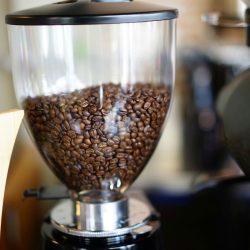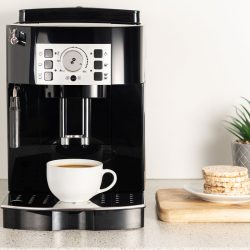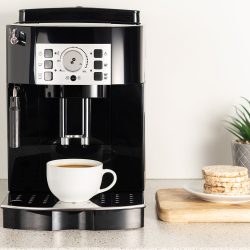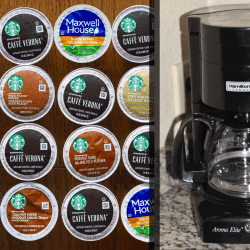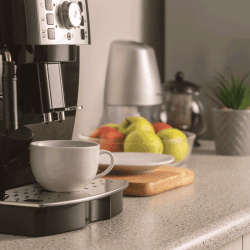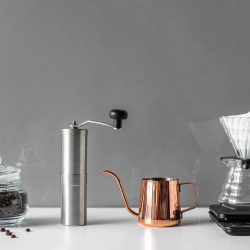Many people have been faced with the question of how many scoops of coffee to use when making a pot of coffee. We've searched the internet for the most comprehensive answer, whatever the reason for the question - a new or unfamiliar coffee maker, or you only want half a pot. You’ll be making a pot of coffee in no time!
Add one coffee scoop for every 6 ounces of water. Your coffee scoop should equal two tablespoons [10 grams]. Be aware that coffee pots usually measure each ‘cup’ as 4-6 ounces and not a standard 8-ounce cup!
Judging how much coffee to use for a pot of coffee can be tricky. The measurements on the pot can vary between manufacturers. And the sheer number of coffee websites explaining how to brew coffee can be overwhelming. Continue reading to find out how to account for all the variables - easily - when you brew a pot of coffee.
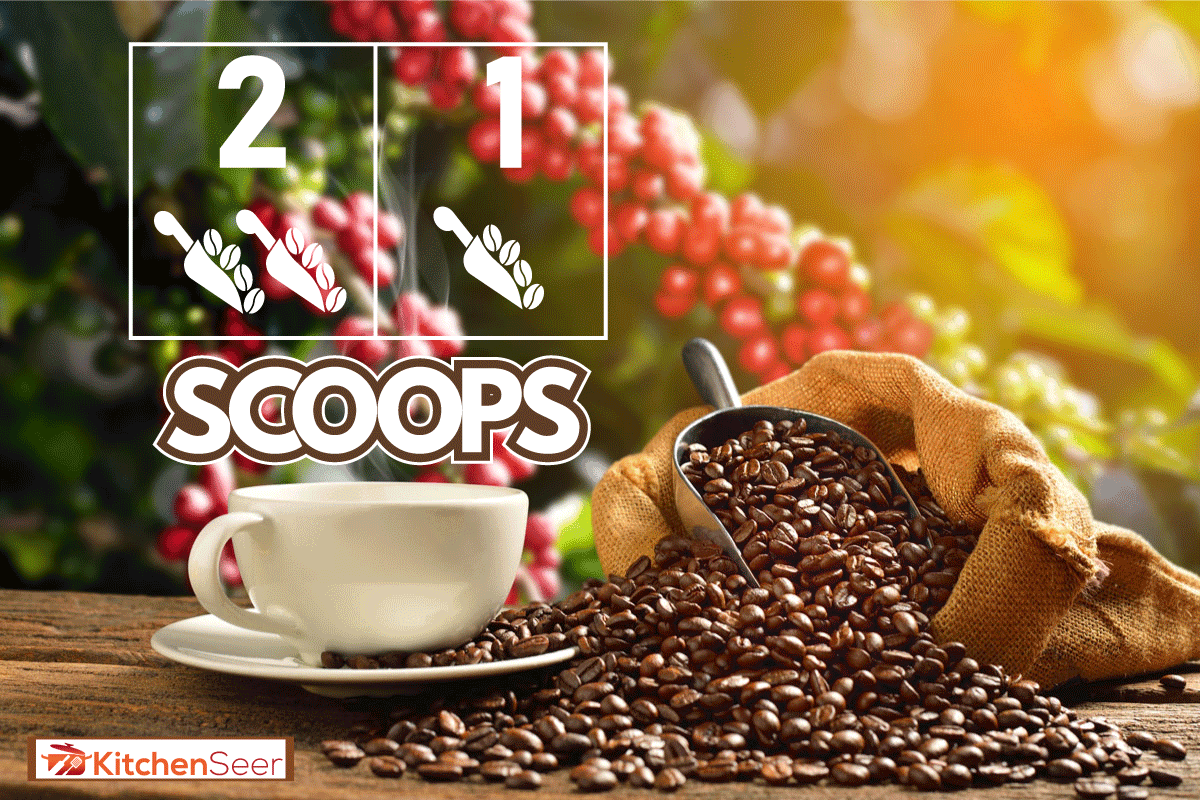
Know Your Tools
The Coffee Maker
There are many different ways to make coffee. Different grinds and amounts of coffee are used for different types of coffee makers. Later on, we’ll have formulas for things like a French Press or pour-over coffee. For now, the ratios will be for an automatic drip coffee maker.
Test your coffee maker by verifying your coffee's temperature as soon as the brew ends. It should be about 180°F. Make sure the pot is clean, and the water is fresh.
How Much Coffee Is In A Scoop?
The Scoop
A coffee scoop should hold two tablespoons. Some scoops have two sides - one end has a two-tablespoon scoop, and the other has a one-tablespoon scoop [if you want a 1/2 scoop].
However, if you have a handmade coffee scoop that you bought while traveling or at a vintage market, it might not be made to that exact measurement. If you’re not sure how much coffee your scoop holds, check how many measured tablespoons fit level in the scoop.
Above, this double-sided coffee scoop is convenient for varying your coffee amounts. See it on Amazon.
The Pot
Don’t be misled by the marks on your coffee pot. Standard glass coffee pot ‘cup’ measurements are not usually eight measured ounces. They can range anywhere from 4 to 6 ounces. This will affect how many scoops you need.
If your coffee pot does show ‘cups,’ take an 8-ounce cup and pour it into the pot. If the water level is above the ‘cup’ line, your ‘cups’ are not 8 ounces! To get an accurate measurement, use the 8-ounce cup to fill the pot and count how much water it takes to fill your pot.
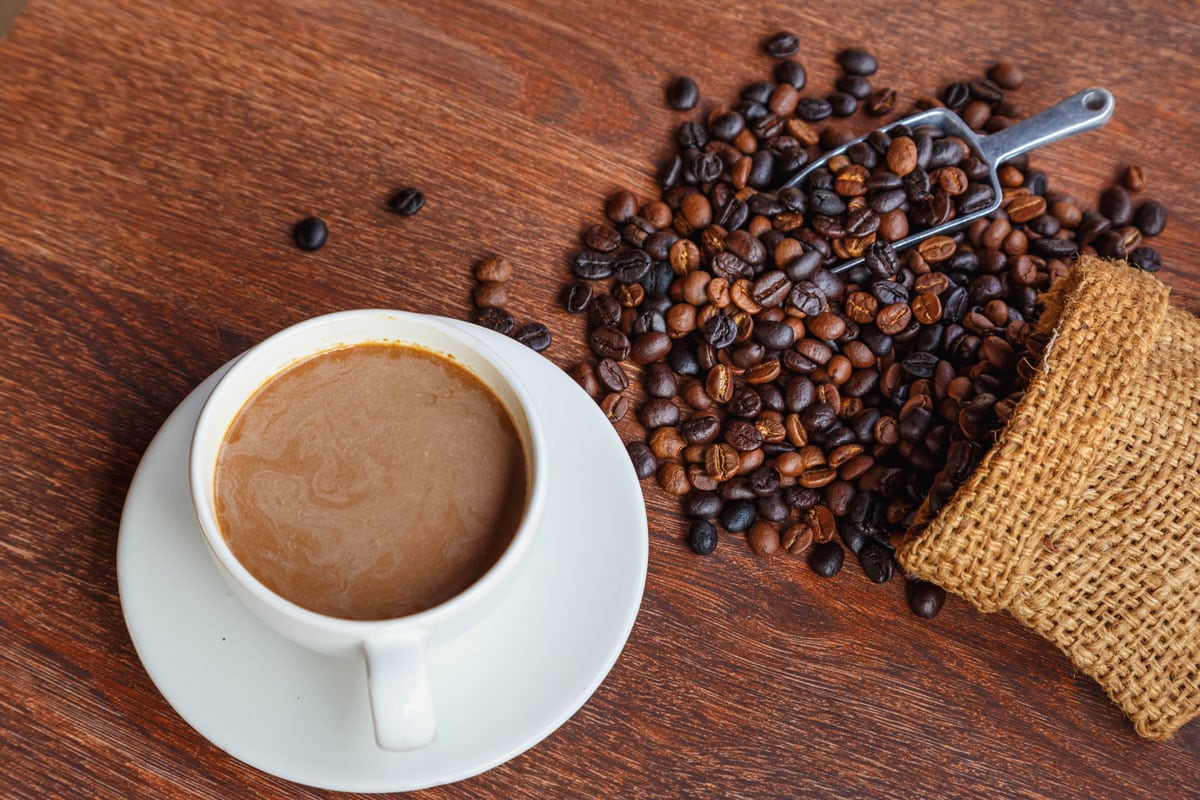
Above, the numbers on the pot don’t always correspond to actual 8-ounce cups!
The Formula
Now that you know how many actual ounces are in your pot, you can calculate how many scoops are needed. Divide the number of ounces by six. The total is how many scoops you need.
Example:
- Your pot holds 30 ounces of water
- Divide 30 by 6 = 5
- Add five scoops [10 tablespoons] of coffee to this pot.
If you like stronger coffee, divide the amount by 5.
Example:
- Your pot holds 30 ounces of water
- Divide 30 by 5 = 6
- Add six scoops [12 tablespoons] of coffee to this pot.
If you like lighter coffee, reduce the total by 1/2 or 1 scoop per 6 ounces.
Now you’re ready to brew!
What is the best ratio for coffee to water?
To brew a pot of coffee to the “Golden Standard,” according to the SCA [Specialty Coffee Association], the ratio of coffee is 1:18 - that’s one gram of coffee to every 18ml of water. In this case, add one coffee scoop - 2 tablespoons - of coffee to every 6 ounces of water.
The SCA recommends 8.25 grams of whole bean coffee to 5.07 fluid ounces [150ml] of water. This would brew one cup of coffee.
However, many coffee aficionados will argue that this ratio is used for ‘cupping’ [taste testing] and doesn’t have the strength needed when milk, sugar, or flavorings are added.
So you can change the ratio of coffee to 1 gram of coffee for every 15ml of water. This equals about two scoops to every 5 ounces of water.
If you still want your coffee to taste stronger, you can try using darker-roasted beans, grinding the coffee a bit finer, or using an even smaller coffee to water ratio!
What is the ratio of scoops of coffee to water?
Although it’s not exact, the easiest and fastest way to figure out the ratio of scoops to water is to use two scoops (2 tablespoons) of coffee for every 6 ounces of water. For a strong-tasting brew, use two scoops for every 4 ounces.
Here is a quick table of how much coffee to use and the grind recommendations from counterculture.com for three basic coffee brewing methods.
French Press - Grind like pretzel salt
- 60g [5.85oz] coffee TO 900g [31.80z] water.
- That’s roughly four scoops of coffee for four measured cups [8oz x 4= 32oz] of water.
Pour-Over coffee - Grind like kosher salt
- 30g [2.93oz] of coffee TO 500g [17.70z] of water.
- That’s about 2 1/2 scoops [3tbsp] of coffee to 2 1/4 measured cups [8oz x 2.25= 18oz] of water.
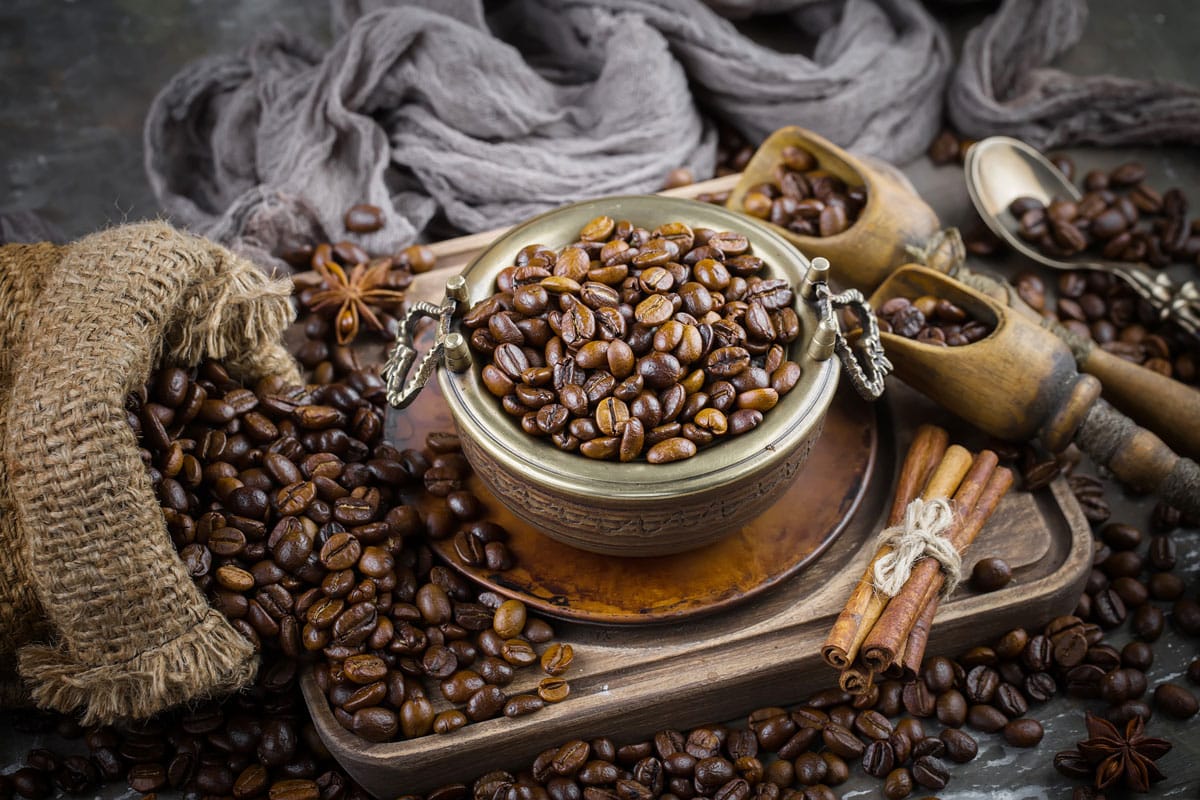
Classic Pour-over coffee is pictured above.
Auto-drip makers - Grind like coarse sea salt
- 60g [5.85oz] coffee TO 1000g [35.27oz] of water.
- That’s about three scoops [6tbsp] to a little over 4 1/2 measured cups [8oz x 4.5= 36oz] of water.
Above: Coffee visualized in 6 grinds from top to bottom. Beans, extra coarse, coarse [pretzel salt], medium-fine [kosher salt], fine [sea salt], extra-fine [used for Turkish coffee].
For an in-depth article on using Percolators, see "How Much Coffee To Put In A Percolator."
Why does my coffee never taste good?
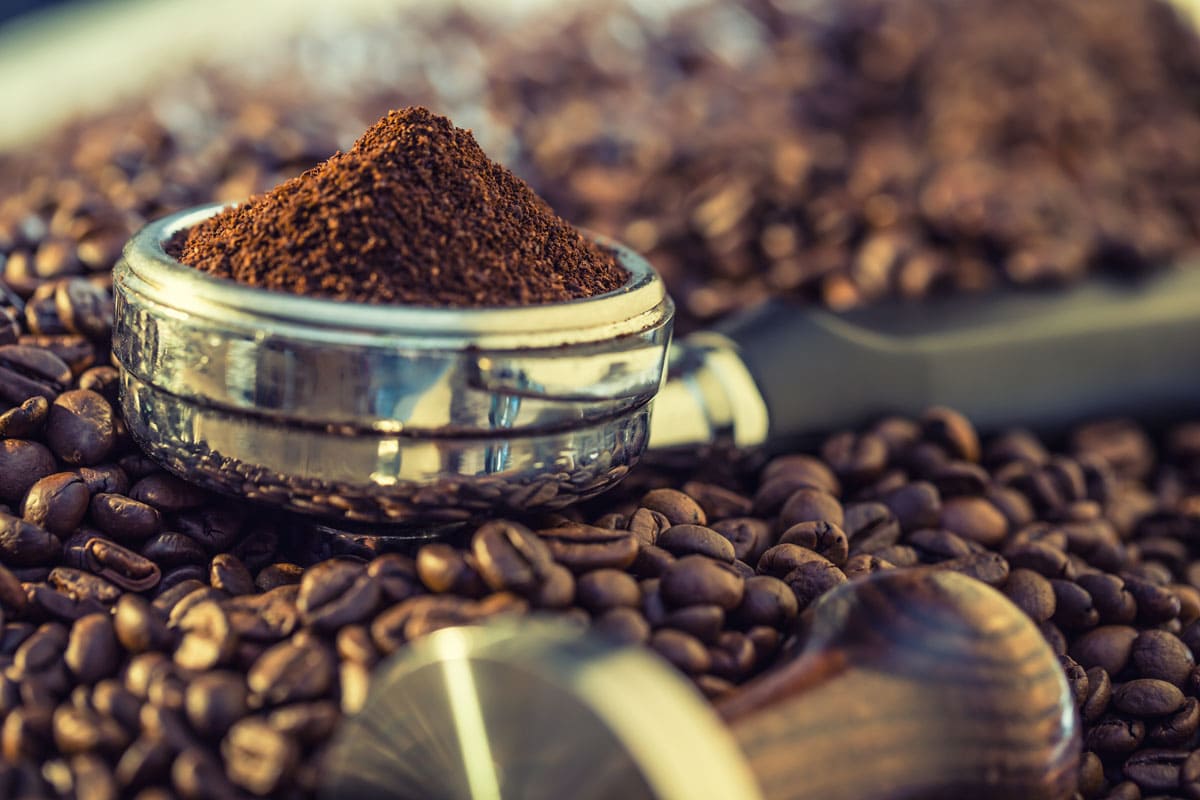
If your coffee never tastes good, check each of the following categories to troubleshoot your brewing process.
Water
Use Cold Water
It may seem strange, but the fact is that starting with cold water makes the final pot of coffee taste better. Why?
- Cold water contains more oxygen-> oxygenated water tastes fresher, -> fresh water makes fresher tasting coffee.
- Cold water has not been sitting in your water heater, gathering unpleasant odors.
Clean Water
Coffee is 98% water. So you can bet your water quality will affect the taste of your coffee!
- Let the cold tap run for 12 seconds to flush out stale water in the pipes.
- Clean bacteria from the faucet head where you draw your water.
- Consider using filtered water.
If you haven’t cleaned your coffee pot or coffee maker in some time, it might be time for spring cleaning.
- Add 1/2 cup of vinegar to your coffee reservoir and run the coffee maker. Then flush out the vinegar by running clean water through the cycle 2-3 times.
- Clean your coffee pot inside and out with baking soda, and rinse thoroughly.
- Never use soap in a coffee pot.
- If you use a dishwasher, the soap may leave a slight residue inside your coffee cups. Clean all cups with baking soda, or rinse well with hot water before using.
Brewing Temperature
Coffee requires the correct temperature to dissolve the solids and extract the flavor of the beans. Therefore, the brewing temperature for coffee should be between 195°F and 200°F.
Underbrewed - As automatic coffee makers age, their capacity to heat water to the correct temperature declines. Test the temperature of your coffee immediately after brewing. If the coffee is less than 180°F, it might be time for a new coffee maker.
Overbrewed - On the other end of that problem, your coffee maker might be brewing coffee well above 200°F. This could result in burnt-tasting coffee. Again, test the coffee temperature immediately after brewing. If the temperature is over 190°F, your coffee might get burned while brewing.
Beans
There is a reason why so many people are obsessed with grinding and roasting their own beans at home. The reality is that coffee beans, just like any other plant, start to lose freshness as soon as they are picked. And after roasting and grinding, the beans can only last so long before the oils become old and rancid.
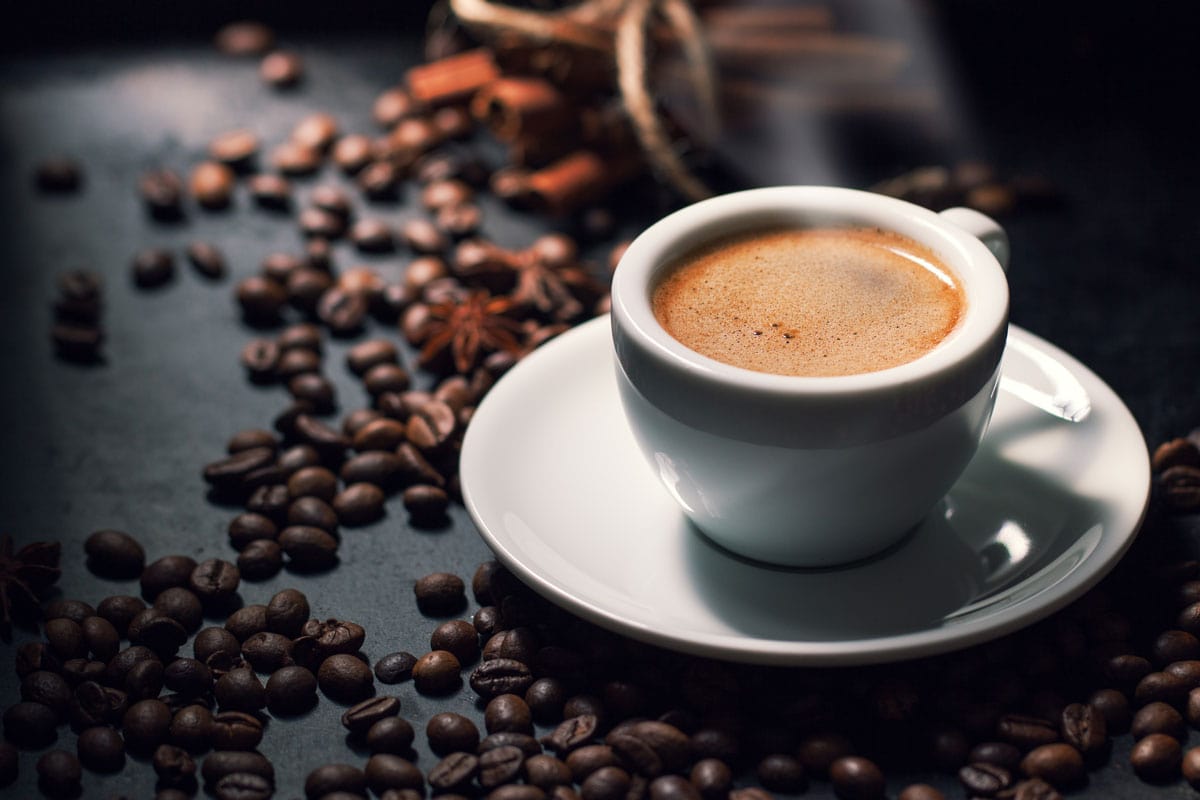
Fresh, well-roasted beans always equal a great cup of coffee.
Storage
- Keep your beans in a cool, dry, dark location.
- Keep them away from heat sources.
- Do not store them in the refrigerator.
Grinding
- Try grinding your beans fresh, just enough for 2-3 days, instead of all at once.
This manual coffee grinder allows you to manage the exact coarseness of your coffee grounds. See it on Amazon.
Summary
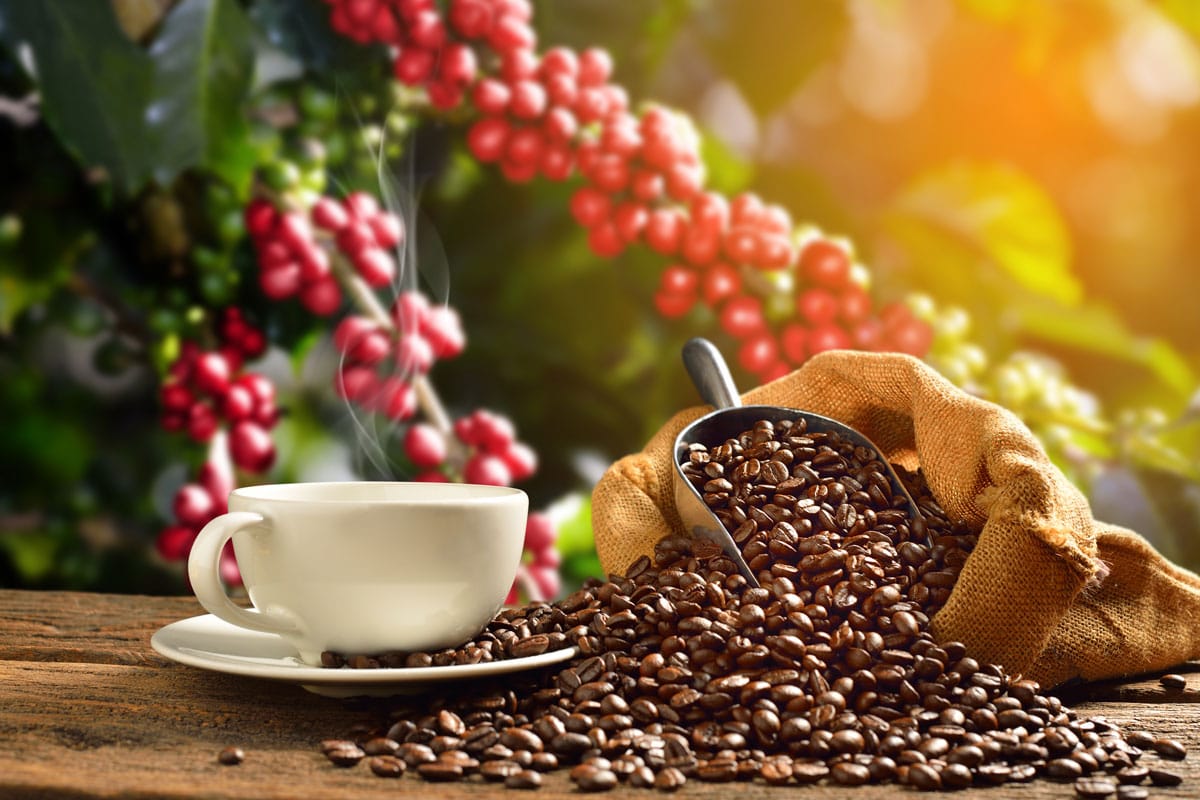
Now that you’ve learned all about how many scoops of coffee you need for your coffee pot, you’re on your way to becoming a home barista. Remember the easy calculations above, keep your utensils clean and your water fresh, and soon your friends will be telling you how great your coffee tastes!
For some more excellent articles about making coffee, read:
Coffee Maker Vs. Espresso Maker Vs. French Press – What Are The Differences?
Can Coffee Be Too Fine For An Espresso Machine?



